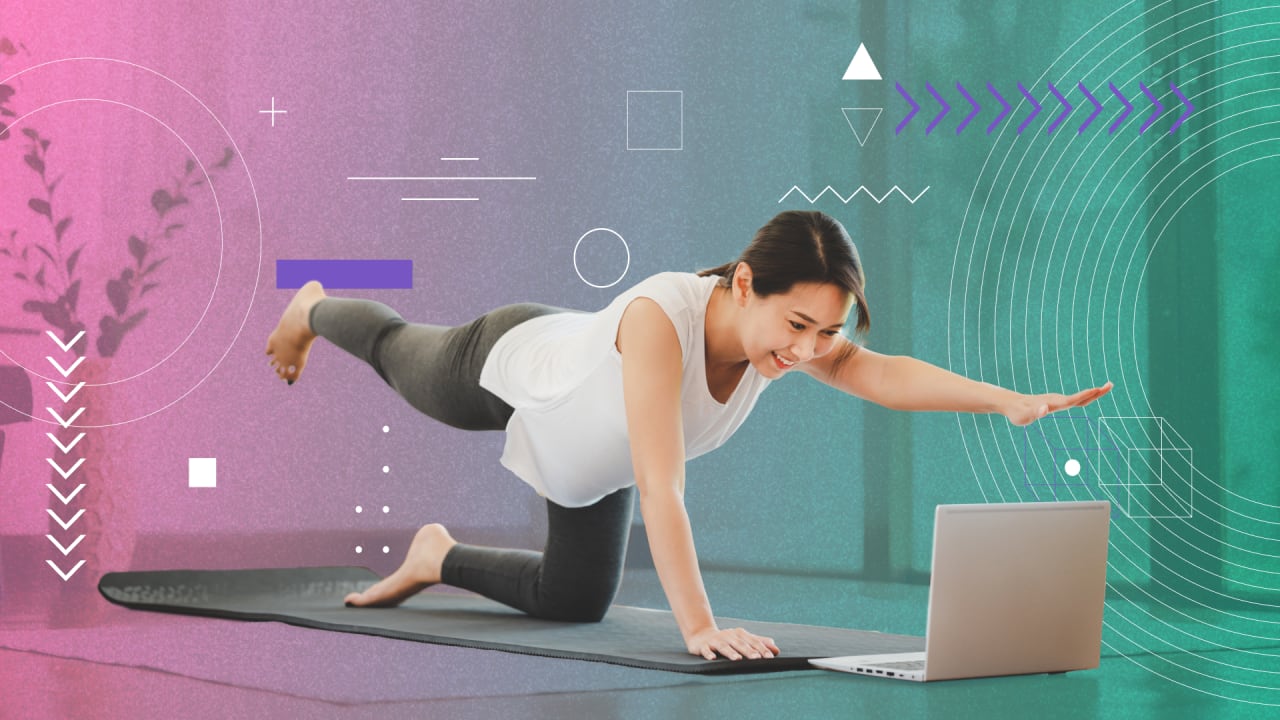
Boutique fitness—which has skyrocketed in the past decade—has consistently faced criticism for catering to a privileged and exclusive demographic. A Washington Post article asked in 2018, “Is your spin class too young, too thin, and too white?” Undoubtedly, access to boutique fitness is impacted by economic stratification, but the kind of bodies that are represented and welcomed in such spaces also plays a role in who feels included or accepted.
COVID delivered a precision strike to traditional boutique fitness businesses. At the peak of gym closures in March 2020, studio management provider Mindbody reported class bookings everywhere fell as much as 85%. In the U.S., the return to in-person studio classes has been uneven, due in part to varying state and local restrictions.
In the process, lifestyles that became suddenly home-based upended traditional fitness regimens. Live-streamed classes became the major way that most group fitness consumers began to access fitness classes when COVID hit. At certain points during the pandemic, nearly 75% reported using live stream classes to work out, and over half reported that even when gyms fully reopen, they intended to use home-based live workouts as a part of their routine, if not the sole way they intend to access group fitness.
Consumers recognize the convenience benefits of working out from home—no commute, safety from disease, less worrying about childcare arrangements, access to top instructor talent, and being able to work out with friends and family across the country. But deeper than this, the shift toward virtual is expanding both access and representation in boutique fitness. Beyond having access to top-quality fitness from the comfort of home, those who experienced virtual fitness firsthand also reported psychological benefits, noticing themselves shifting their focus to how they feel and less upon how they look relative to others.
Brick-and-mortar studio brands now not only have to worry about competing with the convenience of at-home fitness, but they may also be fighting with a deeper, cultural shift. The virtual fitness revolution is creating more inclusive spaces for people.
INSTRUCTOR APPEARANCE AND AUTHORITY
The fitness industry has long sold itself on the “ideal aesthetic” for decades. Generally speaking, oppression comes from assuming that everyone holds hegemonic ideals of beauty and holds uniform aspirational goals for fitness when they walk into a physical gym or studio.
And that’s the catch-22 of diversity in fitness: While representation matters and improves self-efficacy, much of fitness is aspirational—people want their instructors to be an ideal to aspire to. And in many cases, society’s tendency is to associate “fit” with “skinny,” despite the health industry’s general understanding that being thin doesn’t necessarily make you healthier.
BARRIERS TO FITNESS
When health advocates discuss barriers to physical activity, they often cite factors like time, motivation, or access to facilities and equipment. But when people overcome all those roadblocks and eventually get to the gym, they can face mental barriers there, too.
According to a Mindbody survey from 2021, 56% of Americans experience “gymtimidation,” or the fear of working out in front of others. In another Mindbody survey with 1,600 boutique fitness consumers conducted in June 2020, of those consumers who choose live-stream fitness, about 30% said that they preferred it because it enabled them to work out without feeling judged or pressured to look or perform a certain way.
In the setting of a fitness class or gym, some people thrive on social comparison as it pushes them to work harder. But for others, especially those taking a class for the first time or who are starting at a new gym or studio, social comparison and negative self-criticism or evaluation can lead to defensive avoidance—meaning they might not come back to class if they feel like they do not “fit in” with the rest of the class. For these people, virtual fitness can provide a reprieve from subconscious thoughts that may appear, unsolicited, during a workout.
CREATING A MORE INCLUSIVE IDEAL
Making people feel included means making them feel seen, but feeling seen and feeling supported can mean different things. There are plenty of ways virtual fitness providers can achieve this.
When leading a class, virtual instructors need to strike a balance between encouragement and critique; the verbal cues instructors give can be inspirational, but they can easily become demoralizing. Instructors should monitor participants’ form and provide cues, motivation, and humor to ensure not only an effective workout but an inclusive experience. Given that, in the context of a fitness class, instructors have authority, and they need to use their authority and platform if not to perpetuate positive ideas, then at least not to perpetuate damaging ones.
The fitness industry is facing disruption, but like many disruptors of this decade, virtual fitness has the potential to create a more diverse, inclusive, and equitable future. Rather than conform to what boutique fitness has become—exclusive, often competitive, and sometimes toxic—virtual fitness can push the needle toward a community for everyone to work toward their best selves, and find joy, strength, and peace along the way.
Amaya is Chief Product Officer at bande, a virtual fitness company, and has 15 years of experience in marketing & product leadership.
from WordPress https://ift.tt/2YHwoQp
via IFTTT

No comments:
Post a Comment